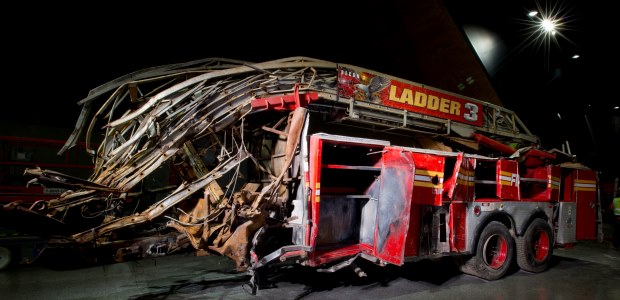
Study Shows Persistence of 9/11 Firefighters' Long-term Airway Diseases
Charles B. Hall, Ph.D.., a professor in the Department of Epidemiology and Population Health, Albert Einstein College of Medicine of Yeshiva University, discussed the findings in a 9/11/14 post on the NIOSH blog.
In a 9/11/14 post on the NIOSH blog, Charles B. Hall, Ph.D.., a professor in the Department of Epidemiology and Population Health, Albert Einstein College of Medicine of Yeshiva University, discussed the findings of a newly published study documenting the long-term obstructive airway diseases experience by FDNY firefighters who responded to the World Trade Center during the 9/11 terrorist attacks that felled those buildings.
The results were published in the Aug. 1, 2014, issue of the American Journal of Epidemiology. "We found that although the relative rate of new-onset OAD diminished after 15 months, it remained elevated in firefighters who had experienced higher exposure intensity for the entire five-year follow-up period," Hall wrote. "Similar results were seen in analyses that examined the incidence of OAD subtypes (asthma and chronic bronchitis). This is a longer period of latency than has been seen in previous studies of short-term exposures, but the WTC-exposure was unusually intense compared to other occupational/environmental exposures."
New-onset OADs continue to be reported many years after exposure, which contradicts conventional wisdom that irritant-induced asthma surfaces soon after exposure, Hall explained. The post describes the dust cloud "that was found to contain a huge variety of irritants including partially combusted and/or pulverized wood, paper, and jet fuel; pulverized construction materials including asbestos, glass, silica, fiberglass, concrete, and silica; complex organic chemicals; lead; and other metals."
Supported by a NIOSH cooperative agreement, the research was done by a group at the Fire Department of the City of New York, one of the Clinical Centers of Excellence in the WTC Health Program that NIOSH administers funded by a NIOSH cooperative agreement. They assessed whether the higher incidence rates of physician-diagnosed OAD seen in firefighters who experienced a higher intensity of exposure persisted throughout the first five years after the attacks, and they found that it was. They were limited to five years because in the sixth year of the WTC Health Program, free medications were provided, which potentially altered patient-physician behaviors.